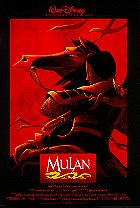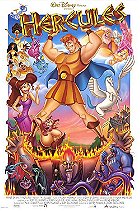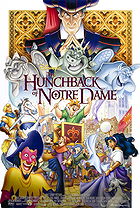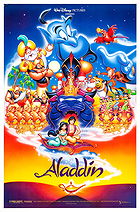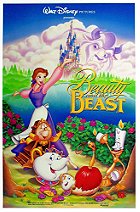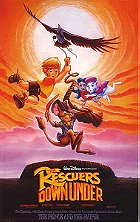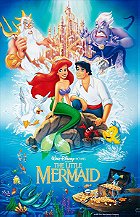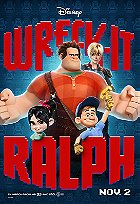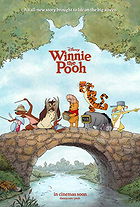Tarzan, the last film of the Disney Renaissance, is a fairly simplistic action-adventure story, and nothing more. For this reason, I have always enjoyed it. It aims to tell a exciting story and does so very well. Of course, after the high-mindedness of so many other films in the Renaissance, films whose ambitions sometimes exceeded their grasps, it’s a slightly unsatisfactory way to wrap up the era.
A few concessions are made towards exploring themes of race and identity, but they’re abandoned in favor of watching Tarzan swing through the trees. Using a newly created technology called Deep Canvas, Disney appears more concerned with flashing their cool new tech than crafting a deep story. Probably for the better, as the Tarzan story is loaded with questionable racial imagery, but part of me wishes that they leaned harder on the ludicrously pulp-y nature of its origins.
But Disney was smart enough to know that this new technique would create eye-popping visuals. Watching Tarzan traverse the trees, vines, and various parts of the jungle with the ease of extreme sports player is thrilling. Strangely hypnotic even, as he demonstrates the skills of a surfer, skier, and a gymnast as the camera tracks his every movement, twisting along with him. This is possibly one of the most gorgeous looking films of the era.
Taking place in an African jungle of the imagination, it’s easy to get lost in the fantasy of it all. That is, until Phil Collins’ truly dreadful songs start playing over the background. Abandoning the typical musical structure, these songs don’t melt into the narrative so easily, but rest upon scenes. This wouldn’t be a problem if any of them were any good, but they’re sappy and unmemorable. The Best Song Oscar win feels like the votes just mindlessly checking off the Disney film, which they consistently did throughout the Renaissance.
I just wish I could place my finger on exactly what is missing from Tarzan to make it leap from good to great. The character designs are enjoyable. Seriously, Tarzan is one of many leads in a Renaissance film that was clearly an early indication of my sexuality, what with this tight torso, thick thighs, and broad shoulders. (Aladdin, Prince Eric, Prince Adam, and Hercules join him in this group.)
The film moves along at a consistent pace, never really losing momentum or taking unnecessary side-plots. It’s a tightly paced 90 minutes, or so. But there’s just something missing. Perhaps it’s the lack of a notable villain? Clayton is more bravado than threatening until the last act, and Sabor has as only two scenes to make an impression. Sabor makes one hell of an impression during the opening, a heart of darkness in an otherwise family-friendly film as it depicts the shipwreck that lands Tarzan’s parents in the African jungle.
I don’t know what exactly is missing from it, but I just know that there’s a spark gone dim here that burns brightly in other films. It feels like a roller coaster, moving from one high-octane moment to another, only taking long enough to pause for your stomach to regroup before the next drop.
 Login
Login
 Home
Home 95 Lists
95 Lists 1531 Reviews
1531 Reviews Collections
Collections
 0 comments,
0 comments, 